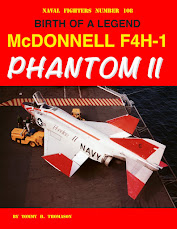15 September 2021 update: Paul Boyer built the LF Models HRP-1 as one of the three operated by the U.S. Coast Guard, the original customer for it (the silver cylinders around the landing gear wheels are pop-open floats for emergency landings on the water).
His summary of the build:
Some build difficulties - Lack of positive parts locators, weak instructions with respect to assembly process, poor fit of interior parts, no flanges on cabin or door windows (replaced with clear packaging tape slightly larger than the window and applied on the outside of the fuselage along with the addition of decals)
Very fragile rotors (THT note: delicate parts at 1/72nd scale)
Good decals
An illustrated history of the Coast Guard's use of the HRP-1 is available HERE
The Coast Guard decals are in LFM-PE7250; the USMC decals are in LFM-PE7251
Although only 20 HRP-1s were produced by Piasecki, it represents a major milestone in the early history of helicopters and an amazing achievement for a young man and his small band of helicopter enthusiasts, rivaling and paralleling that of James McDonnell's fledgling company successfully creating a twin-engine carrier-based jet fighter, the FD/FH Phantom. In the unlikely event that anyone is interested, I wrote a paper on the Piasecki and the HRP for a Vertical Flight Symposium that is available for the asking.
I never imagined that an injection-molded kit would ever be produced of the Rescuer. As a result, a few years ago I bought Unicraft's resin HRP kit, even though I was aware from experience that it would be a challenging build at best and likely of marginal accuracy. I was therefore not disappointed when I opened the box, which I have done at least once a year without doing more than considering whether it was worth the effort to build it at all, much less correct its shape and size errors.
I was therefore very surprised to learn that LF Models in the Czech Republic was to release one in early 2021 and disappointed that its projected availability came and went with no update. Nevertheless, it came to pass and was well worth the wait. It is not only injection molded with a good representation of detail including the steel-tube framework in the forward fuselage and the internally mounted engine, it includes injection molded (not vacuum formed) clear parts, canopy masks, decals, photo-etched parts, and a printed representation of the instrument panel dials. It exceeded my expectations by much more than the Unicraft kit failed them.
The HRP was a huge helicopter for the time, dramatically so relative to the little two-seat Sikorskys. I regret to report that the kit is slightly huger than 1/72 but only by a 1/4" or 18 actual inches, which is only about 3 percent not to mention a bit difficult to rectify. I'm certainly going to live with it. Note that I have not built it yet so this is a preliminary review after a close look at the contents of the box.
The instruction sheet is pictorial. This early inboard profile (ignore the rotor-hub fairing depiction) may be of help in understanding and orienting the drive system:
The pilot and copilot seats in the forward fuselage were actually offset slightly to the left side for access from the cabin:
Note that the pilot had an instrument panel with nine instruments on it as provided in the kit but there was also an upper instrument panel visible in the picture above as a narrow black rectangle above eye level.The copilot only had a four-instrument panel in front of him.
The vents on the bottom of the engine compartment are well represented but not the big air intake (it was an air-cooled engine) on the top of the fuselage:
I'm not sure about the shape of the blade tips: the kit's are squared off but I'm sure that some, if not all, were rounded:
Note that the rotor diameter should be 6 13/16 inches (41 feet) when assembling it and the rotors did not in fact overlap. That was a later refinement of the tandem rotor concept.
Note that statically, the rotor blade themselves are relatively stiff but angle down from the hub attach point.
In the unlikely event that you see a picture of the attachment of the main landing gear to the bottom of the fuselage that is different from the kit's, that was an early configuration:
A couple of challenges for those wanting to add a degree or two of difficulty:
1. Folded (necessary for stowage aboard ship):
2. Lightened for ASW research with a dipping sonar:
















Great stuff, Tommy. The last photo, of the HRP sans skin for ASW research, looks like a great scratch build project for someone with a lot of Evergreen styrene rod. I'd love to read a copy of your presentation - I believe you have my email address. Thanks! Cheers, Bill
ReplyDeleteHi. I'd *love* to see that paper on Piasecki and the HRP that you made for a Vertical Flight Symposium! Could you send me a copy, please?
ReplyDelete(For some reason this page does not understand I'm logged into Blogspot. so... my account is marc dot witsel at gmail dot com.)
Thanks in advance!
Marc